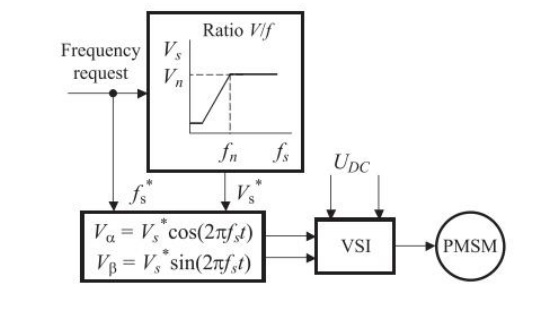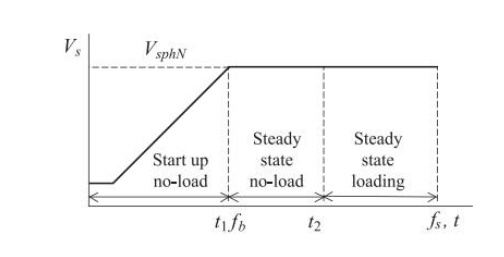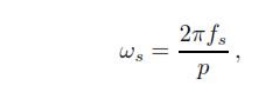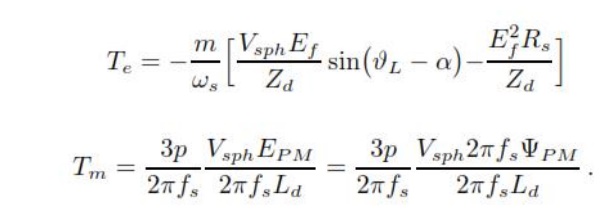Chapter: Solid State Drives : Synchronous Motor Drives
V/F of Permanent Magnets Synchronous Motors
V/F OF PERMANENT MAGNETS SYNCHRONOUS MOTORS


Constant
volt per hertz control in an open loop is used more often in the squirrel cage
IM applications. Using this technique for synchronous motors with permanent
magnets offers a big advantage of sensor less control. Information about the
angular speed can be estimated indirectly from the frequency of the supply
voltage. The angular speed calculated from the supply voltage frequency ac-
cording to (1) can be considered as the value of the rotor angular speed if the
external load torque is nothing her than the break down torque.
The mechanical synchronous angular speed ωs is
proportional to the frequency fs of the supply voltage

Where p
is the number of pole pairs.
The RMS value of the induced voltage of AC motors
is given as

By neglecting the stator resistive voltage drop and
as sum- in steady state conditions, the stator voltage is identical to the
induced one and the expression of magnetic flux can be written as

To
maintain the stator flux constant at its nominal value in the base speed range,
the voltage-to-frequency ratio is kept constant, hence the name V/f control. If
the ratio is different from the nominal one, the motor will become overexcited
around excited. The first case happens when the frequency value is lower than
the nominal one and the voltage is kept constant or if the voltage is higher
than that of the constant ratio V/f. This condition is called over excitation,
which means that the magnetizing flux is higher than its nominal value.
An increase of the magnetizing flux leads to arise
of the magnetizing current. In this case the hysteresis and eddy current losses
are not negligible. The second case represents under excitation. The motor
becomes under excited because the voltage is kept constant and the value of
stator frequency is higher than the nominal one. Scalar control of the
synchronous motor can also be demonstrated via the torque equation of SM,
similar to that of an induction motor. The electromagnetic torque of the
synchronous motor, when the stator resistance Rs is not negligible, is given

The torque will be constant in a wide speed range
up to the nominal speed if the ratio of stator voltage and frequency is kept
constant

Related Topics